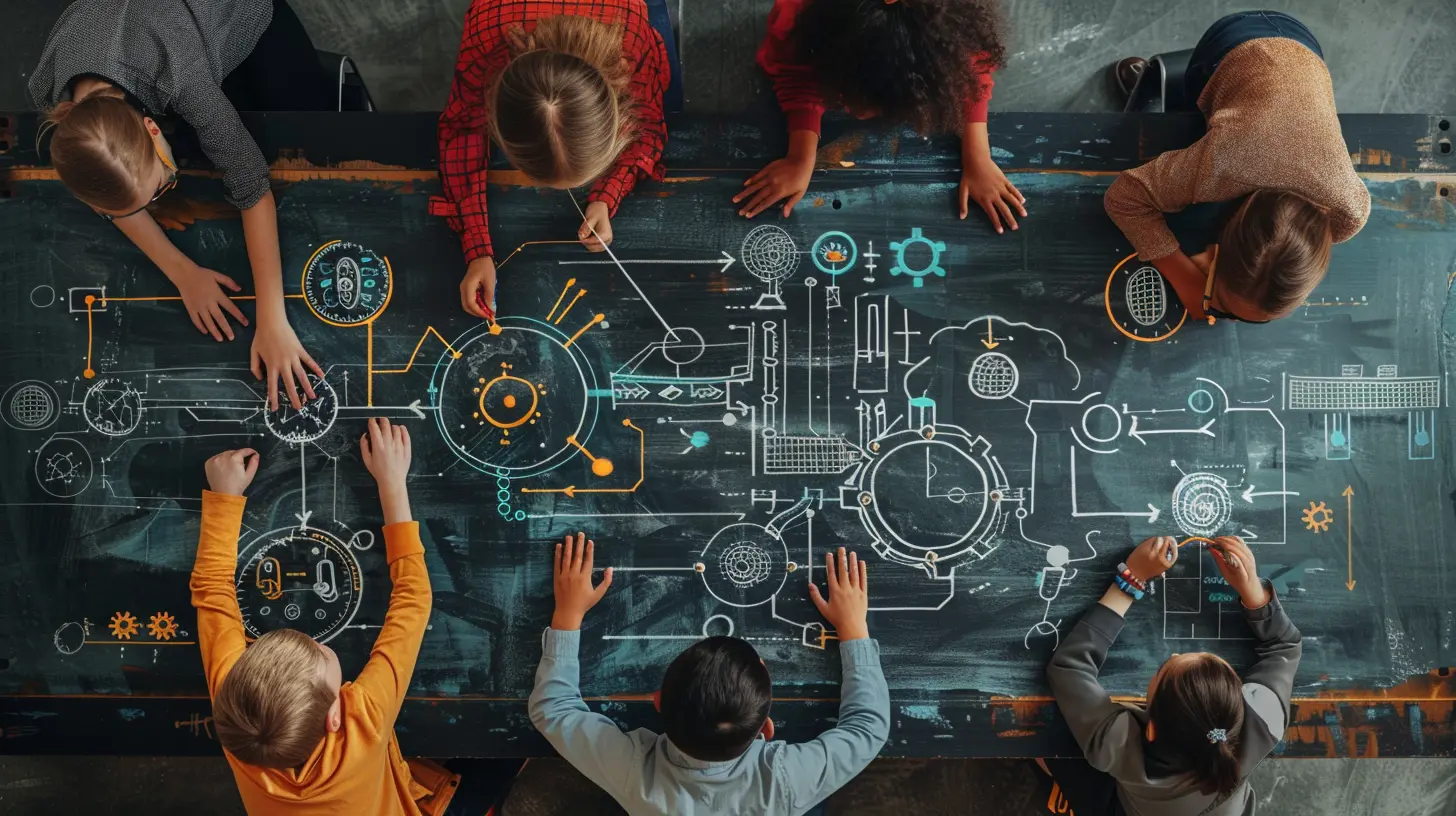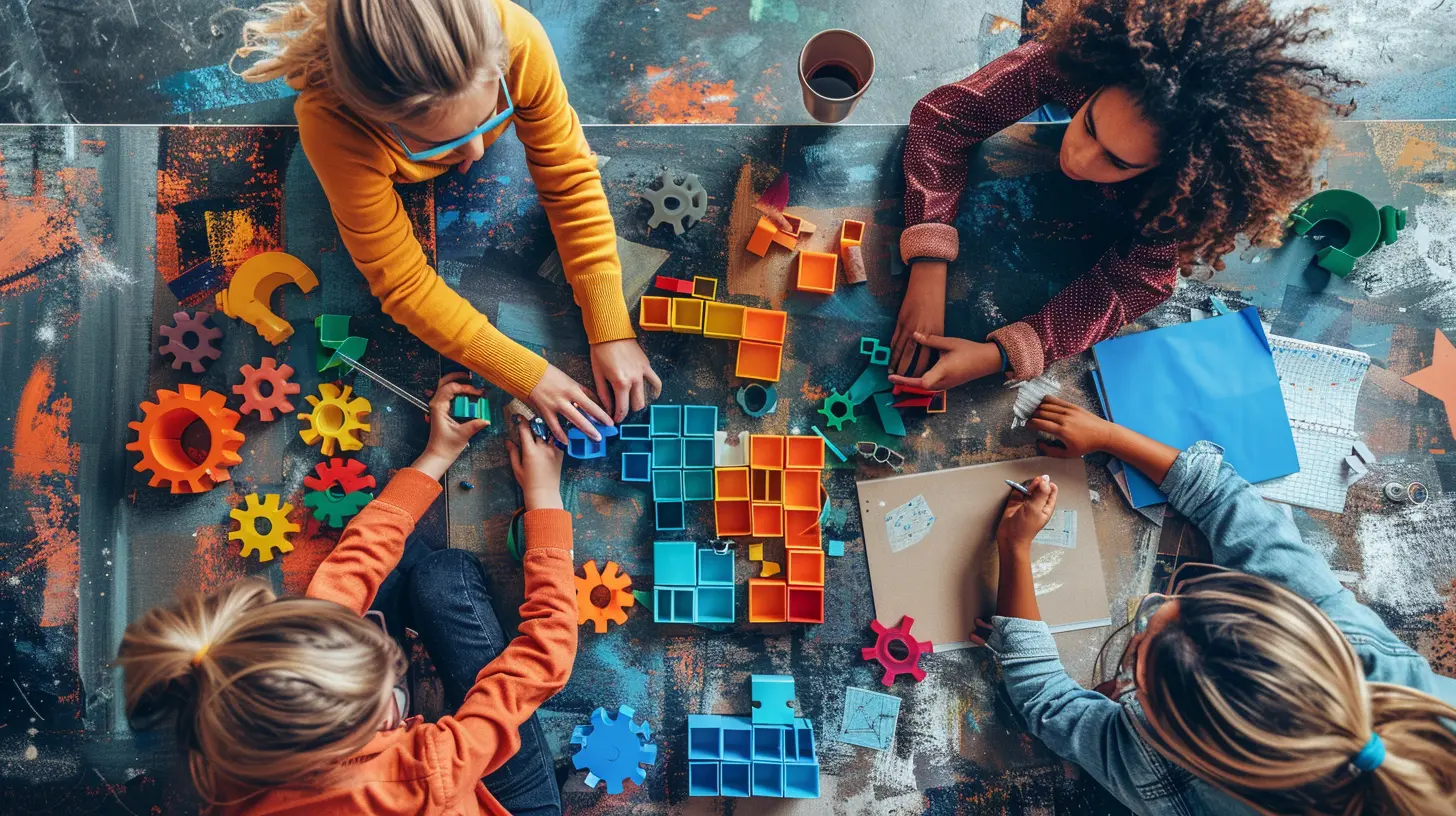Collaborative Learning for Problem-Solving in STEM Education
26 June 2025
STEM (Science, Technology, Engineering, and Mathematics) is at the heart of innovation. But let’s be honest—solving complex STEM problems alone can feel like standing at the base of a mountain without a trail map. That’s where collaborative learning comes in. Instead of tackling challenges solo, students work together, share insights, and build on each other's strengths to find the best solutions.
But how does collaboration enhance problem-solving in STEM education? And why should educators focus on teamwork instead of individual achievement? Let's dig in!

What is Collaborative Learning?
Before we go any further, let’s break it down. Collaborative learning is when students actively engage with one another to solve problems, complete tasks, or understand concepts. Instead of simply listening to lectures or reading textbooks, students:- Work in groups
- Exchange ideas
- Challenge each other’s perspectives
- Build knowledge together
It’s not just about “group work.” Effective collaboration means everyone contributes and benefits from the discussion. It’s a powerful way to sharpen problem-solving skills—something STEM fields absolutely demand.

Why Problem-Solving in STEM Needs Collaboration
STEM problems are rarely simple. Whether designing a sustainable energy source, coding an AI model, or constructing a bridge, real-world challenges require multiple perspectives and expertise. Here’s why problem-solving in STEM flourishes with collaboration:1. Encourages Critical Thinking
Working as a team prompts students to question assumptions, analyze data, and refine their logic. When different minds come together, they challenge each other's reasoning—leading to stronger conclusions.2. Develops Real-World Skills
Let’s face it—STEM careers aren’t solo journeys. Scientists, engineers, and researchers all work in teams. Collaborative learning mimics this real-world teamwork, preparing students for future workplaces.3. Boosts Creativity and Innovation
Two (or more) heads are better than one! Collaboration sparks creativity by allowing students to build off each other’s ideas. Innovation thrives when diverse perspectives come together.4. Reduces Cognitive Overload
STEM can get overwhelming. When students divide complex problems into smaller tasks, it eases the mental load. Each group member focuses on their strength, leading to a well-balanced solution.
How to Implement Collaborative Learning in STEM
So, how can educators bring collaboration into STEM classrooms? Here are some tried-and-true strategies:1. Project-Based Learning (PBL)
In PBL, students work together to solve real-world problems. Whether it’s designing a robotic arm or finding ways to reduce ocean pollution, PBL encourages deep engagement and teamwork.2. Peer Teaching
Ever noticed that teaching something helps you understand it better? In peer teaching, students take turns explaining concepts to each other. It boosts confidence and strengthens comprehension.3. STEM Hackathons & Competitions
Bring in challenges like science fairs, coding hackathons, or engineering competitions. These events push students to think critically and problem-solve under pressure, all while collaborating.4. Flipped Classrooms
Instead of traditional lectures, let students learn concepts at home and use class time for discussion and group problem-solving. This method maximizes collaboration and keeps students engaged.5. Role-Based Group Work
Assign clear roles in group projects—like a data analyst, researcher, or project manager—so every student has ownership of the task. This prevents “passenger” students from sitting back while others do all the work.
Overcoming Challenges in Collaborative STEM Learning
Of course, collaboration isn’t always smooth sailing. Here are some common challenges—and how to tackle them:1. Group Conflicts
Disagreements will happen. The key? Teach students conflict resolution strategies like active listening and finding common ground.2. Unequal Participation
Some students may take charge while others stay quiet. Assigning roles and setting group expectations ensures everyone contributes.3. Time Management Issues
STEM projects can get time-consuming. Encourage teams to break tasks into smaller milestones to stay on track.4. Lack of Engagement
If students don’t see the value in collaboration, they won’t put in effort. Show them how teamwork reflects real-world STEM professions to boost motivation.The Future of STEM Learning is Collaborative
We live in a world where breakthroughs come from teams, not individuals. Whether it’s NASA’s Mars rover missions or medical researchers developing vaccines, collaboration is at the core of STEM success.By integrating collaborative learning into STEM education, we set students up not just to memorize formulas—but to think, innovate, and solve problems together. And isn’t that what STEM is all about?
So, educators—ready to make learning more engaging, interactive, and future-ready? Start fostering collaboration in your STEM classrooms today!
all images in this post were generated using AI tools
Category:
Collaborative LearningAuthor:

Bethany Hudson
Discussion
rate this article
1 comments
Renata McRae
This article effectively highlights the importance of collaborative learning in STEM education, emphasizing its role in enhancing problem-solving skills. By fostering teamwork and critical thinking, collaborative methods not only engage students but also prepare them for real-world challenges in these fields.
July 7, 2025 at 12:33 PM

Bethany Hudson
Thank you for your insightful comment! I’m glad you found the article's emphasis on collaborative learning's role in STEM education valuable. Engaging students through teamwork is indeed vital for developing essential skills for real-world challenges.


